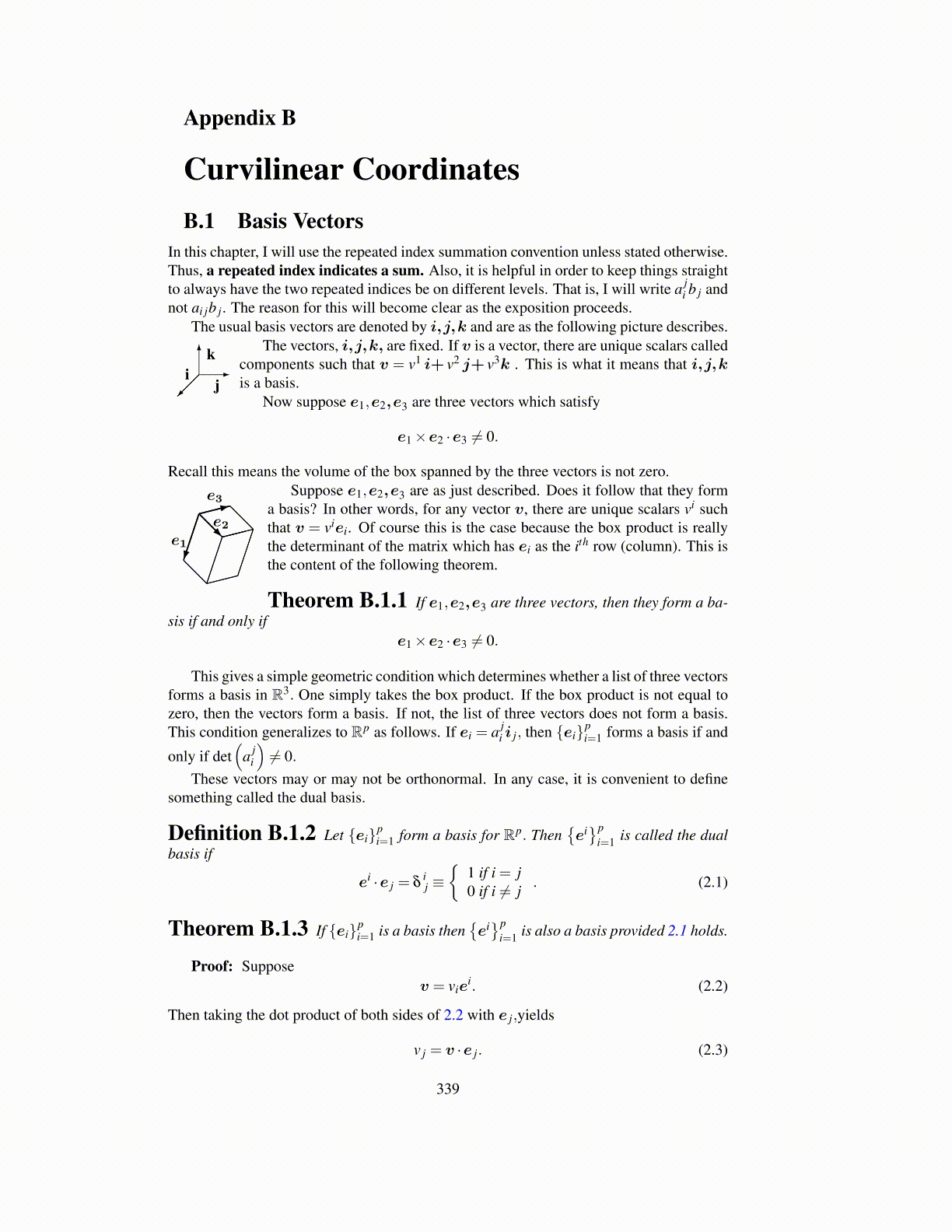
Appendix B
Curvilinear CoordinatesB.1 Basis Vectors
In this chapter, I will use the repeated index summation convention unless stated otherwise.Thus, a repeated index indicates a sum. Also, it is helpful in order to keep things straightto always have the two repeated indices be on different levels. That is, I will write a j
i b j andnot ai jb j. The reason for this will become clear as the exposition proceeds.
The usual basis vectors are denoted by i,j,k and are as the following picture describes.
k
ji
The vectors, i,j,k, are fixed. If v is a vector, there are unique scalars calledcomponents such that v = v1 i+ v2 j+ v3k . This is what it means that i,j,kis a basis.
Now suppose e1,e2,e3 are three vectors which satisfy
e1×e2 ·e3 ̸= 0.
Recall this means the volume of the box spanned by the three vectors is not zero.
e1
e3
e2
Suppose e1,e2,e3 are as just described. Does it follow that they forma basis? In other words, for any vector v, there are unique scalars vi suchthat v = viei. Of course this is the case because the box product is reallythe determinant of the matrix which has ei as the ith row (column). This isthe content of the following theorem.
Theorem B.1.1 If e1,e2,e3 are three vectors, then they form a ba-sis if and only if
e1×e2 ·e3 ̸= 0.
This gives a simple geometric condition which determines whether a list of three vectorsforms a basis in R3. One simply takes the box product. If the box product is not equal tozero, then the vectors form a basis. If not, the list of three vectors does not form a basis.This condition generalizes to Rp as follows. If ei = a j
i i j, then {ei}pi=1 forms a basis if and
only if det(
a ji
)̸= 0.
These vectors may or may not be orthonormal. In any case, it is convenient to definesomething called the dual basis.
Definition B.1.2 Let {ei}pi=1 form a basis for Rp. Then
{ei}p
i=1 is called the dualbasis if
ei ·e j = δij ≡{
1 if i = j0 if i ̸= j . (2.1)
Theorem B.1.3 If {ei}pi=1 is a basis then
{ei}p
i=1 is also a basis provided 2.1 holds.
Proof: Supposev = vie
i. (2.2)
Then taking the dot product of both sides of 2.2 with e j,yields
v j = v ·e j. (2.3)
339